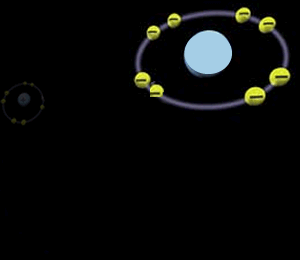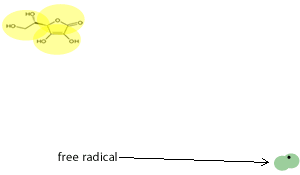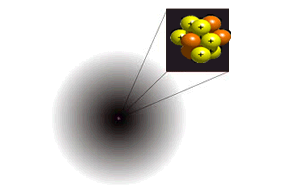Free radicals and antioxidants. |
|
An atom is the smallest particle of matter. It consists of protons (positive charge) neutrons (neutral) and electron (negative charge). It has a small nucleus made up of protons and neutrons which comprises most of the atoms mass. While the electrons move around the nucleus forming a cloud of negative charge. These electrons surround the nucleus in pairs, but, occasionally, an atom loses an electron, leaving the atom with an unpaired electron. The atom is then called a "free radical," or sometimes just a "radical," and is very reactive.
|
|
A radical is an atom with one unpaired electron, as mentioned above. The production of radical oxygen, is the most common radical formed in our body. When a free radical is formed it hunts other atoms to take an electron from them. This causes the creation of another free radical, as shown on the right and the chain of event continues often causing destruction of parts of the cell, such as the cell membrane.
|
 |
| Free radicals occur normally in cells as part of the metabolic process and although they can do damage they are usually taken care of by antioxidants. Often, antioxidants arrive at the scene and give an electron to the free radical before it has a chance to destroy another atom or more importantly destroy vital molecules such as DNA which can cause cancer. |  |
What is the nucleus of an atom made up of? Where about in the atom can the electrons be found? Electrons like to exist in pairs. What happens when an electron becomes unpaired in the atom? What is the role of an antioxidant? Look at the animation above. What happens to the atom when it loses an electron? |
|
